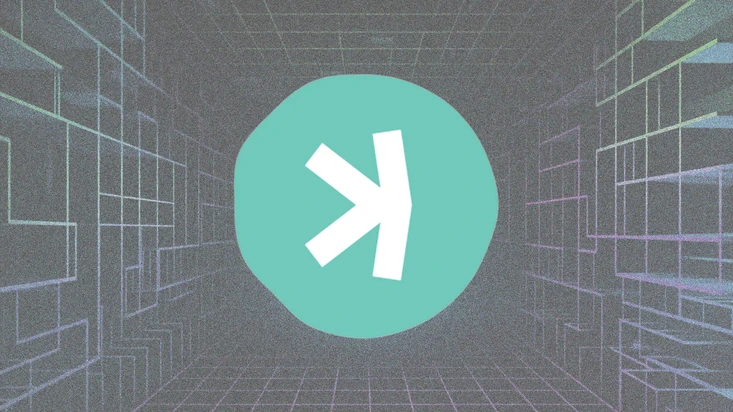
About Kaspa
Kaspa is a Layer-1 blockchain that claims to be the fastest, open-source, and fully scalable blockchain platform in the world.
Kaspa is built on a robust proof-of-work engine with rapid single-second block intervals, making it extremely fast. This makes it the ideal solution to the scalability problem that plagues many traditional blockchain systems. Unlike classic PoW blockchains, Kaspa's proof-of-work consensus mechanism generates and confirms multiple blocks per second, without compromising security and decentralization, as seen with Proof-of-Stake networks.
Kaspa's architecture is specifically built to address the limitations of Bitcoin's blockchain technology and prioritize network speed. At the heart of Kaspa is the GhostDAG protocol, which utilizes a directed acyclic graph (DAG) structure. This innovative protocol allows for the simultaneous processing of multiple blocks, eliminating the need for a linear blockchain.
Currently, Kaspa achieves an impressive block time of 1 block per second. More specifically, Kaspa processes 60 blocks per minute, 3,600 blocks per hour, and 86,400 blocks per day. In contrast, Bitcoin only processes 6 blocks per hour and 144 blocks per day. This stark difference in block time highlights the tremendous speed advantage that Kaspa offers over other PoW networks.
Kaspa's innovative technology has brought about significant improvements in mining performance, leading to its rising popularity among miners. In fact, according to MinerStat, KAS has emerged as the top trending coin and the most sought-after proof-of-work (PoW) cryptocurrency in the market. It's unique features and innovative approach have positioned Kaspa as a preferred choice among miners seeking optimal mining opportunities.
Kaspa Price
The current KAS price is $0,021393 USD with a 24-hour trading volume of $9 509 285 USD. The current market cap of KAS is $396 832 193 USD. It has a circulating supply of 18 549 315 584 KAS coins and a maximum supply of 28 704 026 601 KAS coins.
Kaspa is listed on such exchanges as KuCoin, Gate.io, CoinEx, Bitget, MEXC, and many others. KAS token has native wallet support (mobile, desktop, and command line wallets) as well as an external Tangem Wallet.
How Does Kaspa Work?
The underlying technology of Kaspa is GhostDAG (Greedy Heaviest Observed Subtree Directed Acyclic Graph) protocol. GhostDAG is described as a scalable generalization of the Nakamoto Consensus used by Bitcoin. The GhostDAG protocol allows for faster block confirmation times, resulting in almost instant confirmations.
Unlike other PoW cryptocurrencies where blocks are created one at a time, Kaspa doesn't throw away any parallel blocks created during transactions. Instead, it keeps them all and organizes them in a way that everyone agrees upon. This innovative way of organizing transactions is called a blockDAG.
To understand how GhostDAG works, we first need to understand how traditional blockchains work. In a traditional blockchain, transactions are grouped into blocks and added to the chain in a linear fashion. This can lead to delays and bottlenecks in transaction processing when the number of transactions increases, especially during times of high network traffic.
GhostDAG solves this problem by introducing a blockDAG (directed acyclic graph) structure that allows for parallel processing of transactions. In this structure, transactions are grouped into blocks and linked together in a non-linear fashion, forming a tree-like structure.
Unlike a traditional blockchain, where a block can only reference one previous block, in a blockDAG, a block can reference multiple previous blocks. This means that transactions can be processed in parallel, significantly increasing the transaction throughput rate.
Furthermore, unlike traditional blockchains where orphaned blocks (blocks that are not included in the main chain) can occur, blockDAGs ensure that all blocks are included in the network and none are orphaned. This helps to prevent the need for unnecessary reprocessing of transactions and also enhances the security and reliability of the network.
Another key technology that powers Kaspa is Pruning. Pruning is a technique used in Kaspa to reduce the size of the blockDAG, which is the structure that holds transaction data. The purpose of pruning is to prevent nodes from having to store excessive amounts of blockDAG data, making it more manageable for decentralized machines. In Kaspa, nodes only need to store about three days' worth of prior history, which significantly reduces storage requirements.
By implementing pruning, Kaspa optimizes the storage requirements of its blockDAG while ensuring the network's security and maintaining the integrity of the blockchain data.
What is Kaspa Used For?
KAS is the native token of the Kaspa blockchain, which plays a crucial role in powering the platform and motivating users to maintain the data's integrity. It stands out by offering transaction fees and compensations to developers, making it valuable for active participants in the network. Miners who maintain nodes are rewarded in proportion to their contributions.
The network's ability to process transactions within a single second is noteworthy because it doesn't require excessive computational power to support numerous hash functions. This allows miners to quickly earn profits.
When it comes to mining, Kaspa utilizes kHeavyHash, which is a modified version of the optimized HeavyHash algorithm called "optical-miner." kHeavyHash employs matrix multiplication framed into two keccacs, making it energy-efficient and suitable for core-dominant mining using GPUs, FPGAs, and specialized mining equipment in the future.
Mining in Kaspa can be done solo or as part of a mining pool. Solo mining involves setting up a mining node, while mining pools are groups of miners who collaborate on Kaspa mining tasks and share rewards accordingly. To learn more about mining Kaspa, please refer to our dedicated article.
Management
Kaspa launched in November 2021 without any pre-mining, pre-sales, or coin allocations. The project is 100% community-managed, open-source, and decentralized.
The project was founded by Yonatan Somplinsky. Sompolinsky is also one of the authors of the GHOSTDAG protocol, which serves as Kaspa’s underlying consensus mechanism. Yonatan Somplinsky holds a Postdoctoral in Computer Science at Harvard University, on the MEV Research Team
Kaspa was developed by DAGLabs with investment from Polychain Capital. DAGLabs – co-founded by Yonatan Sompolinsky – was a research & development company focusing on scalable DAG-based protocols, and was dissolved shortly after the Kaspa launch. Despite the funding from Polychain Capital, Kaspa started with a clear vision of being a decentralized, pure, and open initiative, without any allocations or premine.
The ongoing progress and maintenance of Kaspa and its codebase are actively supported by the following contributors, who are former developers and researchers from DAGLabs: Michael Sutton, Shai Wyborski, Elichai Turkel, Ori Newman, and Mike Zak. These individuals form part of the core team, ensuring the continuous advancement and stability of Kaspa.












